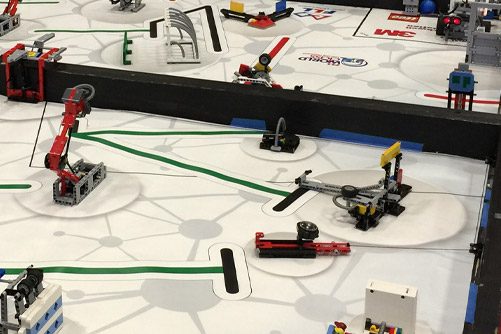STEM Educational Initiatives and The Montessori Method

The current STEM movement is calling for innovation, collaboration, and hands-on learning and problem solving. To the Montessori community, this is nothing new. This is what we’ve been doing all along.
Math and science work harmoniously in nature.
Since the launch of Sputnik in 1957, the US has called for an increase in scientific and mathematical education. Across the country there are new standards for STEM subjects, with educators being charged to be creative and engaging rather than just teaching from a textbook.
What does this mean for Montessori schools?
STEM – Science, Technology, Engineering and Math: Being Creative and Engaging in the Montessori Classroom
Montessori teachers have a jumpstart on their conventional counterparts. Since student engagement is at the forefront of the Montessori classroom, we are already actively engaging students in hands-on learning. Beginning in the Montessori preschool environment, students learn the fundamental rules of math and science through the discovery of natural laws through manipulation of didactic materials and problem-solving with peers. The work engages the senses and insures the internalization of concepts, not just memorization of disjointed facts and figures. Through the Montessori concept of Cosmic Education, the curriculum reinforces that everything is interrelated; students see how math and science work harmoniously in nature, like in the Fibonacci sequence.
On March 29, 2012, the National Governor’s Association issued a brief on “The Role of Informal Science in the State of Education Agenda”. It calls for an increase in hands-on discovery and practice of STEM concepts, something that is already happening across all levels in the Montessori community. It also calls for the use of outside resources and ‘real-life’ activities that engage and focus student’s attention in the areas of science, technology, engineering and math. Again, Montessori teachers have been going outside the classroom opportunities to pique student interest and foster real-life connections for over 100 years.
Larry Page and Sergey Brin, Co-founders of Google, have said that Montessori education allowed them to think for themselves. They credit Montessori with allowing them to question what was going on around them and to discover the answers for themselves. Former Montessori students, Jeff Bezos, founder of Amazon.com, and Will Wright, inventor of “The Sims” video game series, also credit Montessori for allowing them to ask questions, discover, and learn on their own terms.
In a typical elementary Montessori classroom, you will see the teachers using cooperative, hands-on inquiry-based approach for instruction in all curriculum areas, but never more so than with science and math. Students explore, observe, and ask questions. They discuss with each other and the teacher, investigating and exploring ideas. They research and are encouraged to draw their own conclusions and share their findings and knowledge with their classmates. This process is the basis for “learning how to learn”, gaining independence, and becoming life-long learners.
Robotic Lab and Coding Program at A Developing Mind
Robotics
Our students in grades K-8 are exposed to robotics through the use of the NXT Lego Mindstorm education program in structured classes or Open Robotics Lab. The robotic technology of the Lego Mindstorm education program provides a platform for students to develop, build, program, test and evaluate multiple solutions for their robot to complete missions and tasks.
Additionally, students at A Developing Mind Academy may choose to participate in the First Lego League (FLL) after-school program. Team members use the EV3 Lego Mindstorm technology to build and program a robot, work together to find a solution to a real world problem, apply the core values of First Lego League throughout the season, and then compete in the annual First Lego League competitions.
